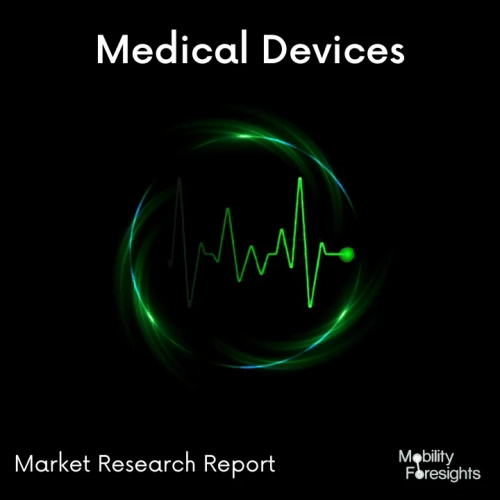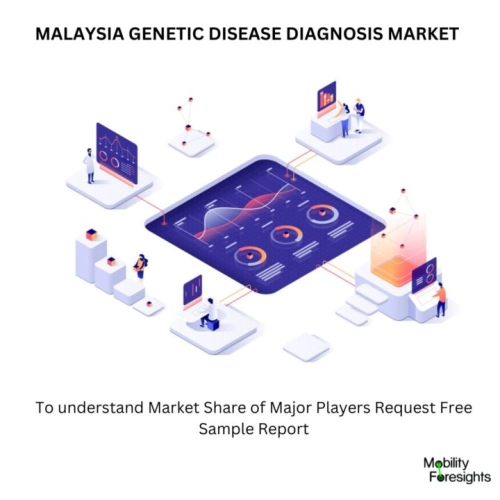
- Get in Touch with Us

Last Updated: Apr 26, 2025 | Study Period:
MALAYSIA GENETIC DISEASE DIAGNOSIS MARKET
KEY FINDINGS
The Malaysia Genetic Disease Diagnosis Market is experiencing significant growth, fueled by rising awareness of genetic disorders and the increasing demand for early and accurate diagnostic solutions. With a diverse population and a notable prevalence of hereditary conditions, there is a growing emphasis on genetic testing for timely intervention and management.
Advancements in technology, particularly in next-generation sequencing (NGS) and polymerase chain reaction (PCR), are transforming the landscape of genetic diagnostics. These technologies enable more comprehensive and accurate testing, allowing healthcare providers to identify genetic abnormalities efficiently. The integration of bioinformatics further enhances data analysis and interpretation, making genetic testing more accessible and reliable.
Government initiatives are also playing a crucial role in promoting genetic testing services. Policies aimed at integrating genetic diagnostics into public healthcare systems are being implemented, increasing accessibility for patients across the country. Public awareness campaigns are educating the population about the benefits of genetic testing, particularly for prenatal and carrier screenings, contributing to growing acceptance and utilization. The market is characterized by a variety of service providers, including local laboratories and multinational companies, collaborating to expand their offerings. However, challenges such as high costs of testing and limited access in rural areas remain.
The Malaysia Genetic Disease Diagnosis Market is poised for continued growth, supported by technological advancements, government initiatives, and an increasing focus on preventive healthcare. This evolving landscape positions Malaysia as a key player in the genetic diagnostics field within the Southeast Asian region.
The Malaysia Genetic Disease Diagnosis Market is rapidly evolving, driven by increasing awareness of genetic disorders and a growing emphasis on early detection and personalized healthcare. With a diverse population that includes various ethnic groups, Malaysia faces a notable prevalence of hereditary conditions such as thalassemia, sickle cell anemia, and certain cancers. This underscores the critical need for effective genetic testing services.
Advancements in diagnostic technologies, particularly next-generation sequencing (NGS) and polymerase chain reaction (PCR), are transforming the market landscape. These innovations enhance the accuracy and efficiency of genetic testing, enabling healthcare providers to deliver timely and precise diagnoses. Additionally, the integration of bioinformatics tools has improved data analysis and interpretation, making genetic insights more accessible to clinicians.
The Malaysian government is actively promoting genetic testing through public health initiatives and policies aimed at incorporating genetic services into primary healthcare. Public awareness campaigns are also on the rise, educating citizens about the importance of genetic screening and encouraging proactive health measures, particularly in prenatal and carrier testing. The market features a blend of local laboratories and international players, all working to enhance service offerings and expand their reach. However, challenges such as high testing costs and disparities in accessâespecially in rural areasâpersist.
The Malaysia Genetic Disease Diagnosis Market is positioned for significant growth, marked by technological advancements, government support, and an increasing focus on preventive healthcare strategies, ultimately aiming to improve health outcomes for the population.

The Malaysia Genetic Disease Diagnosis Market is witnessing several key trends that are shaping its development.Increased public education about genetic disorders has led to greater demand for genetic testing. Awareness campaigns are encouraging individuals to seek early diagnosis, particularly for hereditary conditions. The adoption of cutting-edge technologies, such as next-generation sequencing (NGS) and advanced bioinformatics, is transforming genetic diagnostics. These innovations allow for comprehensive genomic analyses and faster, more accurate results.
The popularity of non-invasive prenatal testing (NIPT) is growing. Expecting parents are increasingly opting for NIPT due to its safety and reliability, reflecting a shift towards less invasive diagnostic methods. There is a growing emphasis on personalized medicine, with genetic testing increasingly used to tailor treatment plans based on individual genetic profiles. This trend enhances treatment efficacy and minimizes side effects.
The Malaysian government is actively promoting genetic health services through supportive policies and funding. This includes integrating genetic testing into public health programs to improve access. Local laboratories are increasingly collaborating with international firms to enhance service offerings and expand genetic testing capabilities. These partnerships facilitate knowledge sharing and technology transfer. There is an increasing focus on diagnosing rare genetic disorders, spurred by advances in technology and a growing understanding of these conditions.
These trends indicate a dynamic and rapidly evolving market, positioning Malaysia as a key player in the Southeast Asian genetic diagnostics landscape.
New product development in the Malaysia Genetic Disease Diagnosis Market is focused on innovation and addressing specific healthcare needs.
Companies are launching targeted NGS panels that screen for a range of genetic disorders prevalent in the Malaysian population. These panels are designed to provide comprehensive insights into hereditary diseases, enhancing diagnostic accuracy. The introduction of advanced NIPT kits is a significant trend. These kits utilize cutting-edge technology to offer safe and accurate screening for chromosomal abnormalities, catering to the growing demand from expectant parents.
New tests focusing on carrier screening for specific genetic disorders, such as thalassemia and sickle cell disease, are being developed. These tests are crucial for couples planning families, particularly in regions with higher prevalence rates. As telemedicine gains traction, the development of mobile applications that facilitate genetic counseling and testing is emerging. These platforms enable patients to access genetic testing services and consult healthcare professionals remotely.
Companies are creating educational resources and platforms that inform both healthcare providers and patients about genetic disorders and the importance of testing. These tools aim to increase awareness and improve informed decision-making. AI-driven algorithms are being developed to analyze genetic data more effectively, assisting healthcare providers in interpreting complex genetic information and providing personalized treatment recommendations.
These innovations reflect a commitment to enhancing diagnostic capabilities and improving patient outcomes in Malaysiaâs genetic disease diagnosis landscape.
| Sl no | Topic |
| 1 | Market Segmentation |
| 2 | Scope of the report |
| 3 | Research Methodology |
| 4 | Executive summary |
| 5 | Key Predictions of the Malaysia Genetic Disease Diagnosis Market |
| 6 | Avg B2B price of Malaysia Genetic Disease Diagnosis Market, By Region |
| 7 | Major Drivers For Malaysia Genetic Disease Diagnosis Market |
| 8 | Malaysia Genetic Disease Diagnosis Market Production Footprint - 2023 |
| 9 | Technology Developments In Malaysia Genetic Disease Diagnosis |
| 10 | New Product Development In Malaysia Genetic Disease Diagnosis Market |
| 11 | Research focus areas on new Malaysia Genetic Disease Diagnosis |
| 12 | Key Trends in the Malaysia Genetic Disease Diagnosis Market |
| 13 | Major Projects Utilizing Malaysia Genetic Disease Diagnosis |
| 14 | Market Size, Dynamics And Forecast, By Geography, 2024-2030 |
| 15 | Market Size, Dynamics And Forecast, By Type of Test, 2024-2030 |
| 16 | Market Size, Dynamics And Forecast, By Technology, 2024-2030 |
| 17 | Market Size, Dynamics And Forecast, By Application, 2024-2030 |
| 18 | Market Size, Dynamics And Forecast, By Application,2024-2030 |
| 19 | Competitive Landscape Of Malaysia Genetic Disease Diagnosis Market |
| 20 | Mergers and Acquisitions |
| 21 | Competitive Landscape |
| 22 | Growth strategy of leading players |
| 23 | Market share of vendors, 2023 |
| 24 | Company Profiles |
| 25 | Unmet needs and opportunity for new suppliers |
| 26 | Conclusion |